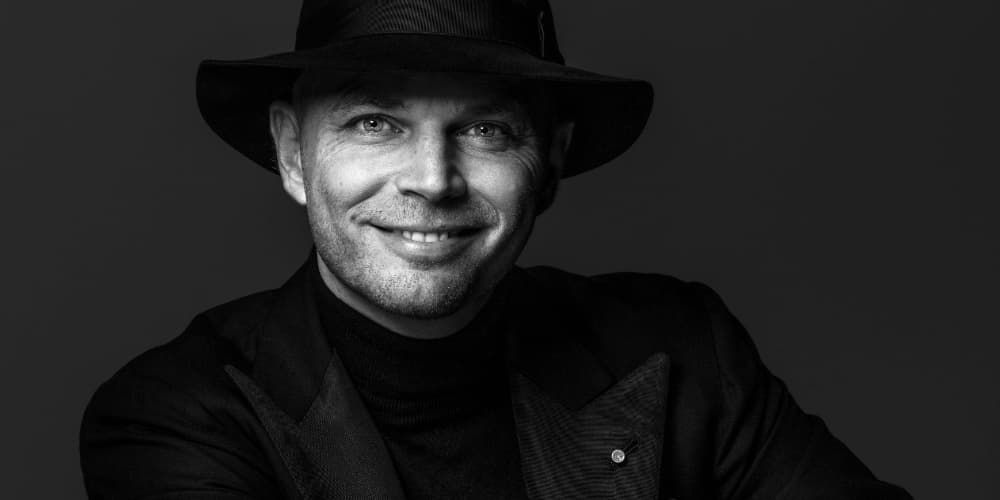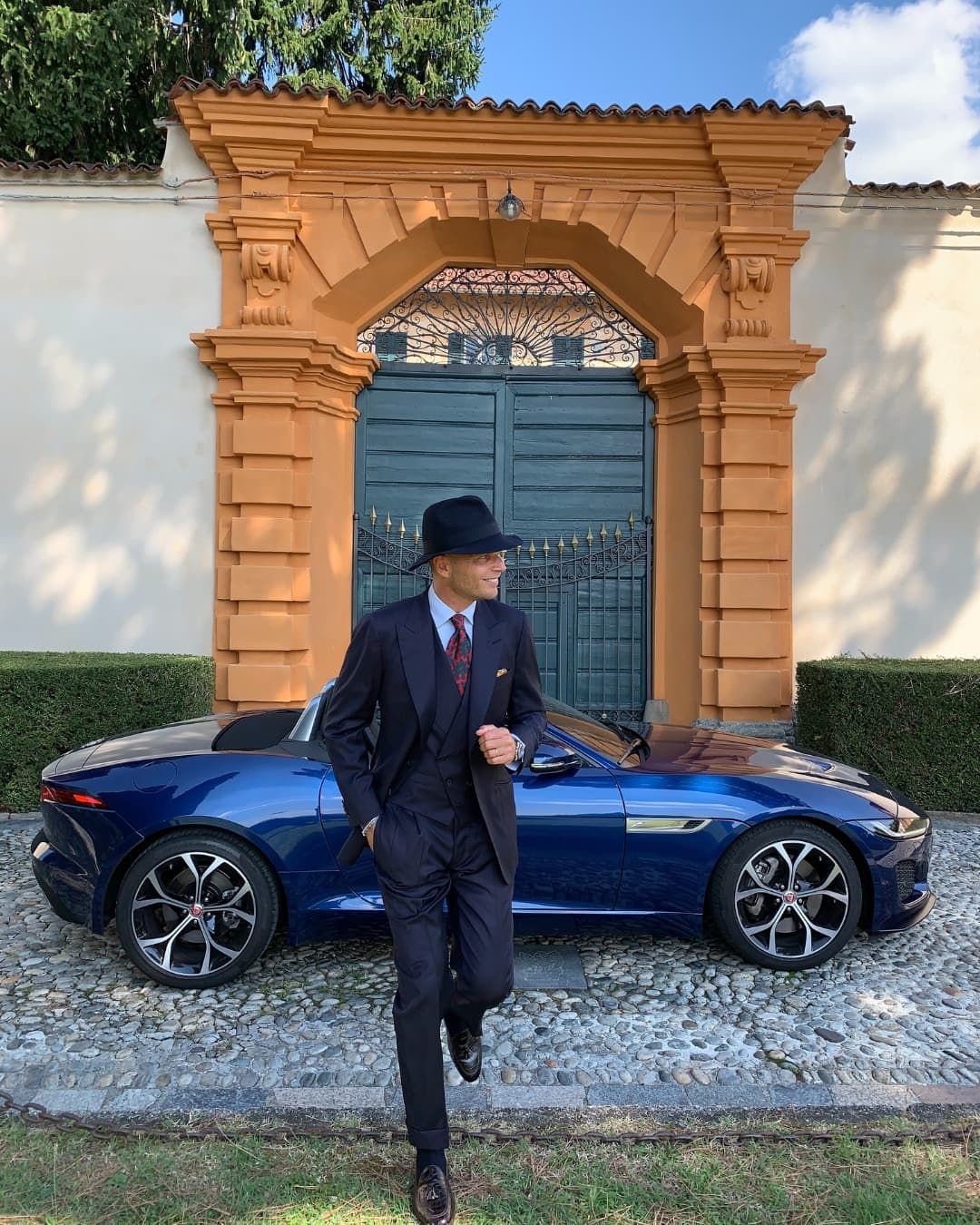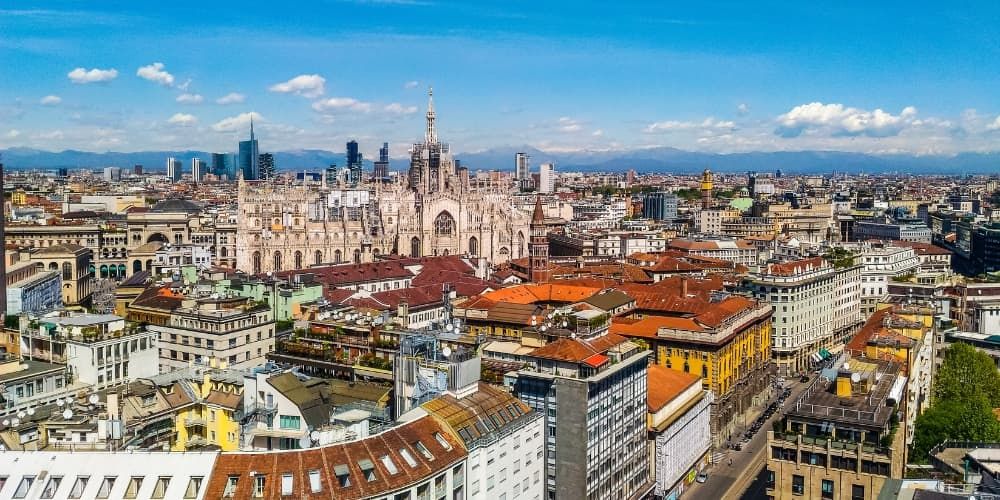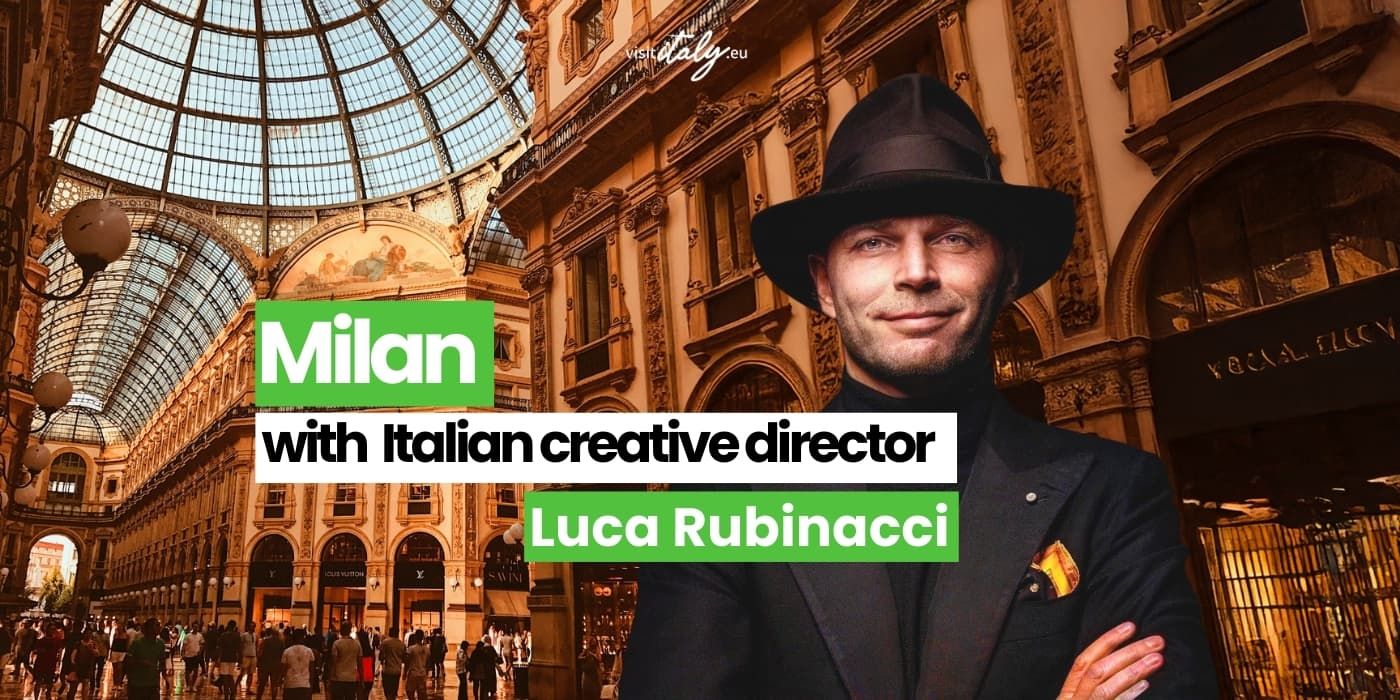Representing the third generation of the historic Rubinacci tailoring house—founded in Naples in the early 1900s and famed for dressing royalty and movie stars—is no easy feat. But while Luca Rubinacci is well aware of the weight of his role, he wears it with effortless elegance, just as he would one of the impeccably tailored suits from his latest collection.
After an early career as a sailor—he was a champion in the sport—Luca transitioned into the world of tailoring with the same ambitious spirit and competitive mindset of someone determined to win. Since taking the reins as creative director 20 years ago, he has transformed the company: pioneering ready-to-wear and e-commerce, and turning his grandfather’s legendary atelier into a globally recognized luxury brand, synonymous with impeccable style and sophistication.
We meet him on a January Monday morning at Rubinacci’s Milan headquarters. Our goal? To steal a few of his secrets on style and elegance—but above all, to discover his favorite places in Italy. Where does he love to travel and spend his vacations? Where does he go to eat and unwind?
In short, we want to know: where does a true Italian gentleman go?
Here’s what he revealed.


So Luca, let’s start with the basics: who are you and how would you define yourself at your core?
I’m a creative and a lover of beauty in all its forms. I’m from Naples and live in Milan, but I feel at home in different contexts. I love Naples as much as Lake Como. I have an open, international mindset, always ready to embrace new experiences and anything that can enrich my life.
When did you realize you had an eye for beauty?
I’d say my sense of aesthetics and love for beauty grew with me. When I was six, my father would take me with him to Pitti— the famous men’s fashion fair. I was just a child, but I had so much fun: my "game" was packing the ties. I’d take them out of their clear plastic cases and then arrange them by color at the booth. By the end of the fair, I had to put them all back in place. When people ask me how long I’ve been going to Pitti, I answer, "since I was six."
Then, when I was about six or seven, after school, I liked playing with fabrics. I had fun taking pieces of cloth and having them sewn onto my pants. So, by middle school, I’d walk around in jeans with green or brown tweed inserts, creating a sort of patchwork. I also remember that my doudou wasn’t the classic stuffed animal, but a bundle of silk pouches knotted by my mother.
All of these things gradually led me to develop a passion for beauty. But it wasn’t an immediate thing. I don’t think you’re born with a sense of style or taste; I believe it’s something that refines over time. It’s an ongoing evolution. It’s not enough to be born in a certain environment or receive something beautiful as a gift to develop a true aesthetic sense. I continue to learn and evolve every day. And I want to highlight something important: beauty is not synonymous with luxury or high cost. Anyone who reduces it to just an economic matter has missed its essence.
Beauty is not synonymous with luxury or high cost. Anyone who reduces it to just an economic matter has missed its essence.
What's on your mind lately? Are there any new projects you're working on?
Over the past twenty years, we've taken Rubinacci on an incredible journey. We've worked to create a "Tailoring 3.0," blending tradition with innovation. We haven’t strayed from our roots—we still craft bespoke garments with some of the world’s finest tailors, maintaining the highest standards of luxury. This is a sector that, by its very nature, has high costs and limited production, making each piece exclusive and desirable. One of our goals was to make the brand more scalable. That’s why, in 2015, we launched a ready-to-wear line with a casual-chic aesthetic. We didn’t want to compete with our bespoke offering but rather create a complementary product designed for both our existing clientele and the next generation.
Right now, I have two things on my mind: expanding the ready-to-wear line and, most importantly, launching our first women’s collection. In our bespoke business, we’ve noticed a growing demand from women—more and more are choosing tailored pieces, often with masculine cuts but reinterpreted in their own style. This made us realize that there was room for something new that could embrace this aesthetic.
In your vision of fashion and tailoring, what inspires and guides you more: the past or the future? What has been or what is yet to come?
Both. You can’t have one without the other. Innovation goes hand in hand with sustainability because, today, anything truly innovative must also be sustainable. A handcrafted product is, by nature, sustainable: artisanal work doesn’t require polluting machinery and prioritizes natural fabrics like virgin wool and 100% cotton, avoiding synthetics like elastane and polyester.
The past inspires us in terms of proportions, cuts, and lines, but the future pushes us to stay relevant. For example, in this year’s summer collection, I used 100% cotton Seersucker—a fabric with a three-dimensional texture that, despite being completely natural, has a stretchy feel. This makes it perfect for contemporary fashion, where comfort and practicality are essential. Yet, Seersucker isn’t a modern invention—it was already popular in exclusive clubs in the 1930s. That’s the real balance between past and future: taking historical materials and reinterpreting them with modern cuts and deconstructed silhouettes, as is the trend today. Our role in tailoring is precisely this: finding the perfect balance between tradition and innovation, using our taste, know-how, and technical skills to create something unique and timeless.

How is Italian fashion doing today? Are we still the best?
Yes, we’re still the crown jewel of fashion—and we always will be—but precisely because of this, we are also the most scrutinized. I see it in my experience with Rubinacci: since we are considered one of the best tailoring houses in the world, every move we make is analyzed. If one day I wear slimmer trousers, people say fashion is changing; if the next day I wear them wider, they think it’s a style statement. It’s not that Italians are necessarily better at changing—we’re great at marketing and making ourselves recognizable.
Today, trends are fragmented: in Paris, people dress one way; in England, another. The fashion system, which is quite different from tailoring, is driven by the extremism of trends.
That’s why, in tailoring, we must stay focused on timeless elegance. This is another aspect of sustainability: creating garments that don’t last just one season but enrich a wardrobe for years—perhaps even becoming valuable vintage pieces.
We live in an era dominated by fast fashion, with brands releasing six or seven collections a year, while even luxury houses multiply their capsule collections to keep up with increasingly inconsistent demand. Our goal is different: we focus on quality, because a well-made product is inherently sustainable. It doesn’t end up in the trash after one season—it can have a second life, be resold, reinterpreted, and passed down.
It's time for starting our journey in Italy, where're going? What are your favorite destinations?
I have so many, and they change with the seasons and the sports I can practice. Luckily, in Italy, I can do it all. In winter, I prefer the mountains for skiing; in summer, the sea for surfing or sailing. During the in-between seasons, I love exploring the countryside or relaxing by the lake.
In summer, I adore places like Capri, Sardinia, and the Aeolian Islands—especially Panarea. I used to go there often when I was younger, though now, with family, it’s a bit more complicated…
For winter, as a mountain lover, I often choose destinations like Courmayeur, La Thuile, and Champoluc—places that are easy to reach and perfect for a weekend on the slopes. That’s the beauty of our country: it’s full of unique and authentic places. And authenticity is the real luxury. Even a simple trattoria can offer a dining experience that’s more memorable than a Michelin-starred restaurant.
If we had to choose one place to start our journey, where would it be?
Many recommend starting an Italian journey from Rome, but I prefer Milan. Milan is an international city with so much to discover—art, museums, monuments, a modern aesthetic—and it’s perfect for those who love walking. You can explore Milan easily on foot, making the experience more enjoyable and less chaotic. Plus, for shopping enthusiasts, the city offers the ideal blend of high-end boutiques and major brands, all within a compact and well-organized area.
Milan also has an incredible culinary scene, from traditional trattorias to glamorous restaurants. A traveler can enjoy top-level dining experiences in a stylish, dynamic setting. Of course, Rome and Naples have incredible food traditions, but Milan offers a perfect mix of Italian excellence and international cuisine.
Italy remains the crown jewel of fashion, and it always will be—but but precisely for this reason, it is also the most scrutinized.
So, we start in Milan. Where do we go next?
Well, that depends on the season! If we were traveling in winter, I’d take you to the mountains—La Thuile, Champoluc, or Courmayeur—charming destinations that are easy to reach. In La Thuile, for example, you’ll find the Montana Lodge, an alpine retreat with contemporary design, a perfect blend of elegance and comfort just steps from the slopes. If you have more time, the Dolomites offer an extraordinary experience, with destinations like Alta Badia, Cortina, or Madonna di Campiglio, where breathtaking landscapes meet top-tier hospitality.
During the mid-seasons, like May-June or September-October, I’d head to the lakes. One of my favorite spots for relaxation is the Mandarin Oriental on Lake Como. I love dining on their terrace at sunset, right by the water, at their bistro. Then there’s Passalacqua—having breakfast on their terrace under red-and-white striped umbrellas is a perfect blend of classic and contemporary charm.
In summer, I always recommend Naples and the Amalfi Coast—perhaps with a stop in Florence first, an ideal city for a couple of days, perfect for exploring entirely on foot. And, of course, Rome, an essential destination for its history and beauty. Naples remains an extraordinary city, rich in culture, food, and atmosphere—an absolute must-visit.
Let's go back to Milan. Where do we go?
For a walking tour, I always recommend what I call Milan’s “Bermuda Triangle”: Montenapoleone, Brera, and the shopping streets. Strolling through these areas means immersing yourself in the essence of the city—exclusive boutiques, elegant cafés, and a unique atmosphere. It’s perfect for a daytime walk.
In the evening, I suggest heading to the Navigli, which have become even more captivating since Expo. Today, it’s the ideal place for an aperitivo, with countless bars and restaurants overlooking the water. It’s a younger, more vibrant area, but incredibly charming and enjoyable.

Can you share some secret spots? What are your favorite places in Milan?
When it comes to restaurants, there’s one place I always recommend: La Latteria San Marco. It’s not exactly a hidden gem—it’s actually quite famous—but it has kept its authentic soul. It’s a historic family-run trattoria that closed for a while before being taken over by the Loro Piana family. It has very few seats, and you can’t make a reservation. At lunchtime, you get that simple, homemade dish—just like something your mom would cook. It’s a favorite among fashion insiders, so don’t be surprised if you see familiar faces, but be prepared—there’s usually a line outside!
If you’re looking for trendy new restaurants, Milan offers endless options. Casa Fiori Chiari is a new spot that has already become a must-visit. Another iconic choice is Langosteria, especially the historic location on Via Savona—it never disappoints.
And I’m really happy that private clubs have finally opened in Milan, making the city feel even more international. Think Cipriani or The Wild—places where you can have an aperitivo, dine, and dance in an exclusive, refined setting. It’s perfect for people like me, who no longer feel like spending the whole night out in clubs.
Our time with Luca Rubinacci comes to an end. It’s been an intense conversation, where we felt his deep passion for Italian tailoring and discovered that, besides being a great athlete, he’s also an enthusiastic traveler, always exploring the beauty of Italy. Every weekend, he’s off on a new adventure, uncovering hidden gems across the country. A meeting filled with style, passion, and adventure. Thank you, Luca, for sharing your world with us.
About the author
Written on 07/02/2025



Benedetta Ricci
Creative Director of family’s historic tailoring house, Luca Rubinacci took us to his favorite spots in Milan—a city for fashion lovers and creators.